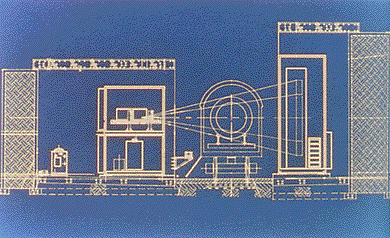 In February and March 1990, the operational status of CargoScan reached a crisis point. Delegations from Moscow and Washington flew to Votkinsk to meet and discuss the issues and recommended solutions. |
Over the
next two months the CargoScan system became a contentious
issue at Votkinsk. In late February, Soviet officials
raised several concerns about CargoScan operations, such
as magnetic tape storage, joint operating procedures, and
the X-ray safety procedures. The American site commander,
Lt. Colonel Roy E. Peterson, U.S. Army, addressed the
Soviet queries point by point. He cited the INF Treaty
and the recently signed Memorandum of Agreement as
authorization for use of the CargoScan system and the
procedures for operating it. The Soviets disagreed.39 On March 1, the CargoScan issue reached a crisis point. Soviet officials declared that a missile-carrying railcar would be leaving the plant. When the railcar exited, Lt. Colonel Peterson directed that the customary visual and manual measurements be taken by U.S. inspectors. Ascertaining that the railcar contained a missile, he requested that it be scanned using the CargoScan system. Since the Soviets had not yet agreed that CargoScan was operational and ready for use by the U.S. inspectors, they did not agree to move the railcar into the CargoScan area. Instead, by mutual agreement, the railcar was moved into the special environmentally-controlled building within the U.S. portal compound, where it was kept under constant U.S. observation while the problem was reviewed by senior government officials in both nations. The railcar and missile remained in the building until the evening of March 9, when Soviet plant officials announced that the railcar and its contents would be moved out of the environmental building immediately and taken out of the American area. Simultaneously, the Soviets declared their intention to have additional railcars leave the plant without allowing the United States to image them.40 |


